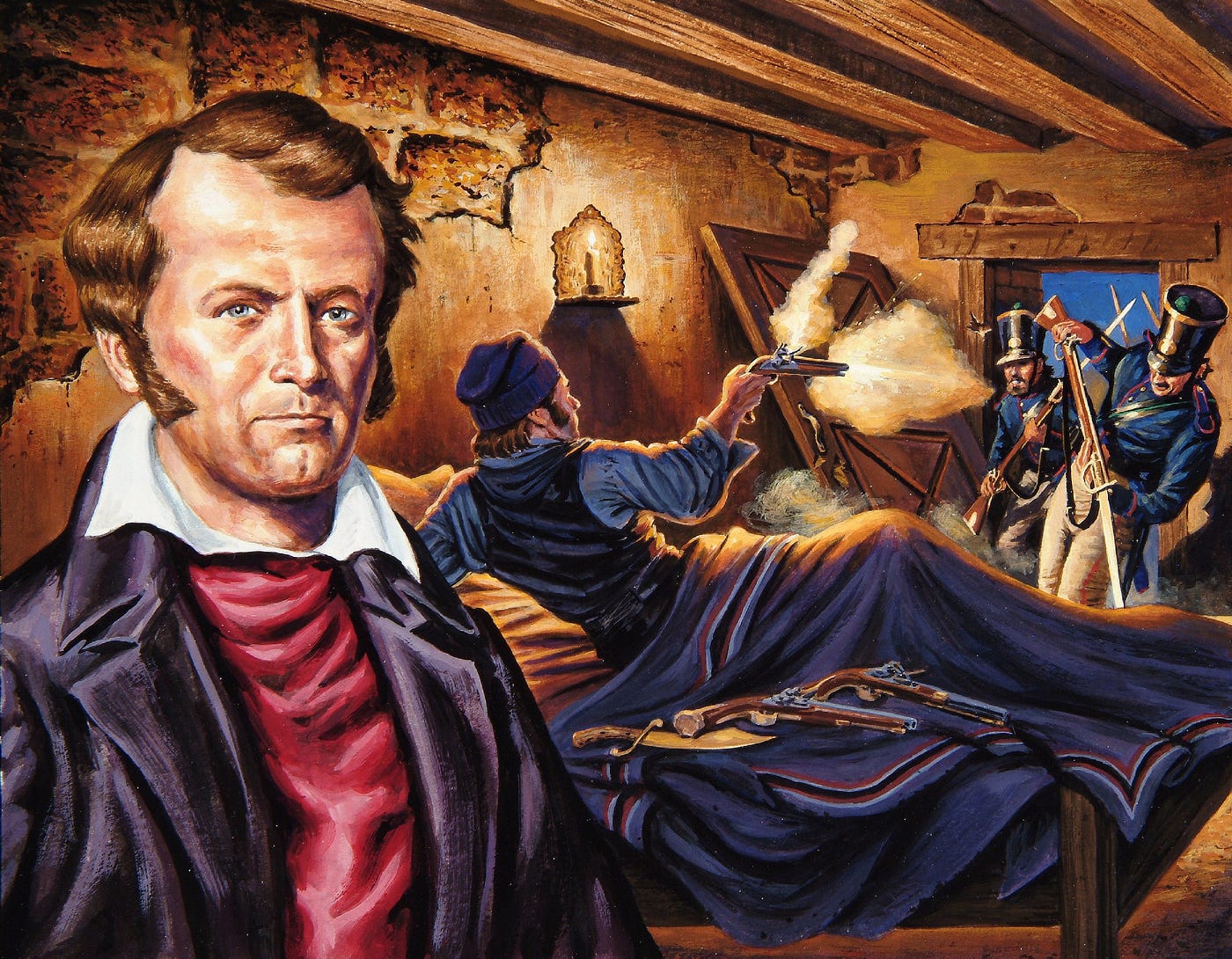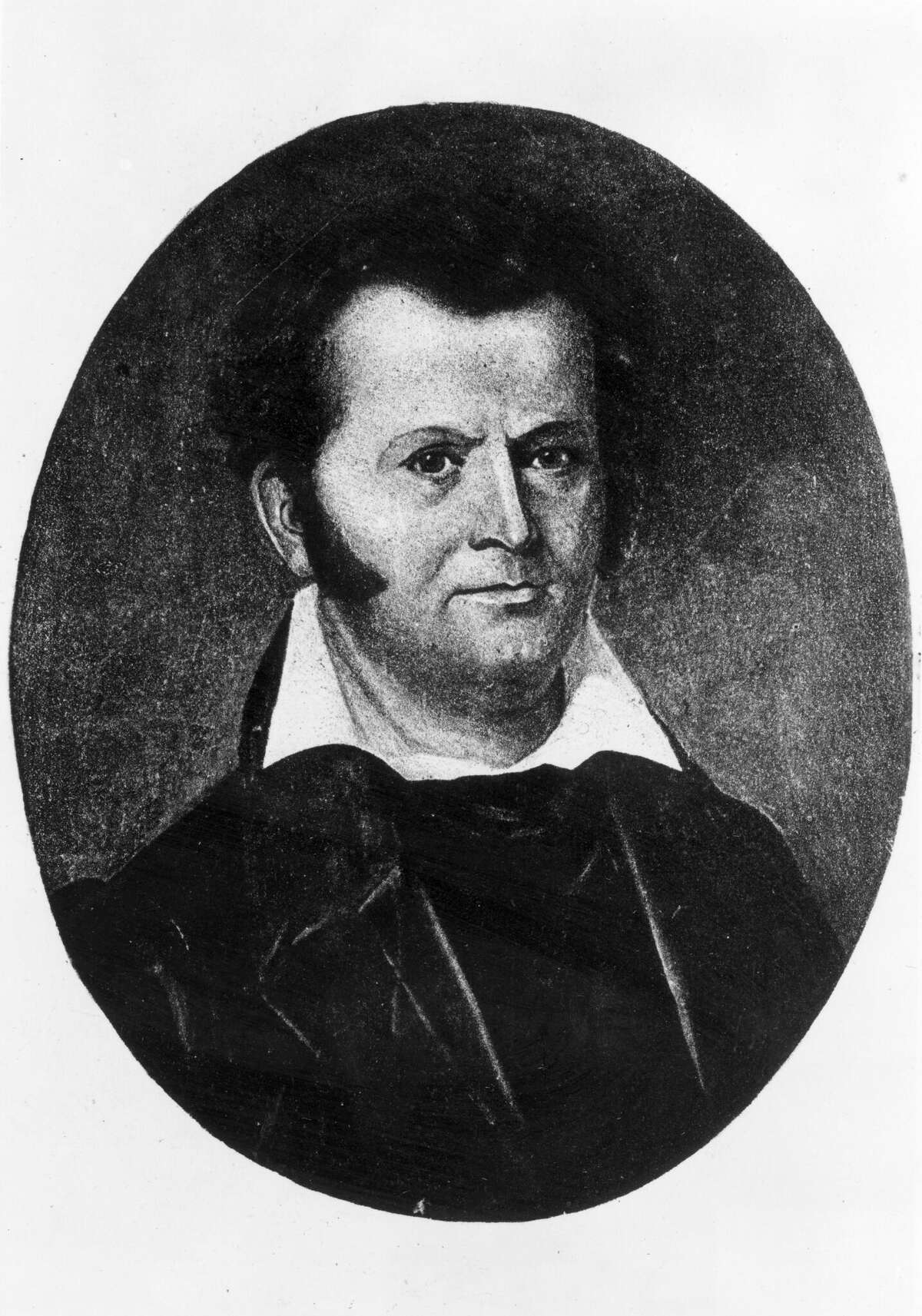
James Bowie: The Unsheathed Myth of America’s Frontier
America’s narrative is woven with threads of grand ambition, rugged individualism, and figures whose lives blur the line between historical fact and enduring legend. These are the titans of the frontier, the self-made men and women whose exploits, real or imagined, have shaped the national psyche. From the towering lumberjack Paul Bunyan to the intrepid frontiersman Davy Crockett, these legends encapsulate the spirit of a nation constantly pushing its boundaries. Among these titans, few cast as long and complex a shadow as James Bowie – a name synonymous with a formidable blade, a defiant stand, and the untamed spirit of the American West.
Bowie’s story is not merely one of heroism, but a rich tapestry of ruthlessness, adventure, and an almost magnetic draw to the most dangerous corners of a nascent nation. He was a land speculator, a slave trader, a duelist, and ultimately, a martyr at the Alamo. His life, steeped in violence and ambition, perfectly embodies the duality of the American frontier: a place of both boundless opportunity and brutal savagery, where legends were forged in blood and iron.
Born in Logan County, Kentucky, around 1796, James Bowie moved with his family through various frontier settlements, eventually settling in Louisiana. This upbringing in the raw, untamed lands of the American South and West imbued him with a self-reliance and toughness that would define his life. He was a man of impressive physical stature, known for his piercing blue eyes and a demeanor that could shift from charming to menacing in an instant. Early in his career, Bowie engaged in highly lucrative, though morally ambiguous, ventures. He and his brother Rezin were involved in land speculation, often using questionable means to acquire vast tracts. More controversially, they engaged in the illegal slave trade, buying enslaved people from the pirate Jean Lafitte and selling them on the American market, exploiting loopholes in the law to maximize profits. These activities, while unsavory by modern standards, were not uncommon for the era and speak to Bowie’s shrewd, often ruthless, entrepreneurial spirit.

The true genesis of James Bowie’s legend, however, arrived dramatically on September 19, 1827, at what became known as the "Sandbar Fight." This infamous melee took place on a sandbar in the Mississippi River, near Vidalia, Louisiana. What started as a duel between Samuel Levi Wells III and Dr. Thomas Maddox quickly escalated into a chaotic free-for-all involving numerous participants, including Bowie. In the ensuing chaos, Bowie was shot, stabbed multiple times with swords and knives, yet not only survived but managed to kill one of his attackers, Norris Wright, with a large knife. This was no ordinary knife; it was a heavy, broad-bladed weapon, possibly designed by his brother Rezin and forged by a local blacksmith. The Sandbar Fight instantly propelled Bowie into national notoriety, transforming him from a regional figure into a living legend of unparalleled toughness and survival.
"Bowie was cut, shot, and stabbed, but kept fighting like a madman," recounted one observer of the Sandbar Fight. His seemingly miraculous survival against overwhelming odds, coupled with the fearsome effectiveness of his unique knife, cemented his reputation as an unstoppable force. The weapon itself became an icon, inspiring countless imitations and becoming known simply as "the Bowie knife." More than just a tool, it became an extension of the man himself, a symbol of American ruggedness, self-defense, and the readiness to face danger head-on. Its distinctive design – a fixed blade, often with a clipped point and a sturdy handle – made it an ideal weapon for both close-quarters combat and utility on the frontier. The Bowie knife was not just carried; it was wielded with a swagger that spoke volumes about the man who bore it.
Following the Sandbar Fight, Bowie’s life continued its trajectory of adventure and danger. He married Ursula de Veramendi, the daughter of a prominent Tejano official, which helped solidify his connections within Mexican Texas. He explored for lost mines, engaged in further land speculation, and became increasingly involved in the growing tensions between Anglo-American settlers and the Mexican government. As the desire for Texas independence intensified, Bowie found his true calling, or perhaps his ultimate fate, in the burgeoning territory of Texas. He quickly became a leader among the American volunteers, participating in early skirmishes of the Texas Revolution, demonstrating both tactical acumen and undeniable bravery. His reputation as a fearless fighter and natural leader preceded him, making him a formidable presence in the nascent Texan army.
It is at the Alamo, however, that James Bowie’s legend calcifies into an indelible part of American lore. In January 1836, Bowie was dispatched by Sam Houston to San Antonio de Béxar to assess the situation at the Alamo mission. His orders were to destroy the fortifications and retreat, but Bowie, along with Lieutenant Colonel William Barret Travis, made the fateful decision to defend the mission. As the Mexican army, led by General Santa Anna, laid siege to the Alamo in late February, Bowie fell gravely ill, likely from typhoid pneumonia or tuberculosis. Confined to his cot in the mission’s chapel, he was unable to actively participate in the fighting.
Yet, even in his final, weakened state, Bowie’s presence was a powerful symbol of defiance. Accounts vary, but the legend maintains that even on his deathbed, he fought valiantly, propped up on his cot, firing pistols and using his iconic knife against Mexican soldiers who breached the walls. "I will never abandon this post," he is famously quoted as saying, even when offered a chance to leave. On March 6, 1836, the Alamo fell, and all its defenders, including James Bowie, perished. His death, alongside Davy Crockett and William B. Travis, transformed him into a martyr for Texan independence, solidifying his place in the pantheon of American heroes.
Yet, to truly understand Bowie is to peel back the layers of myth and confront the complexities of the man. He was not a paragon of virtue; his life was marked by violence, questionable business ethics, and a clear willingness to operate outside the bounds of conventional law. His slave trading activities, in particular, cast a long shadow over his legacy, a stark reminder of the morally compromised nature of the frontier era. However, his courage was unquestionable, his leadership inspiring, and his ability to survive and thrive in a brutal environment was legendary. He embodied the contradictions of a young America: a land of both profound ideals and harsh realities.
The legend of James Bowie, like the glint of his formidable blade, continues to captivate. He represents the ultimate frontier individualist – a man who lived by his own code, carved out his own destiny, and faced death with unflinching resolve. His story has been retold countless times in books, films, and songs, each iteration adding another brushstroke to the larger-than-life portrait. The Bowie knife itself remains a popular and iconic design, a tangible link to a bygone era of American grit and self-reliance.
In the end, James Bowie remains a quintessential American legend: a figure whose true history is often overshadowed by the heroic narratives that have grown around him. He is a testament to the power of myth-making in shaping national identity, reminding us that sometimes, the legend itself becomes more potent and enduring than the historical facts from which it sprang. He was a man of his time, brutal and brilliant, whose life and death helped define the very essence of the American frontier spirit. His blade, his courage, and his final stand ensure that the name James Bowie will forever echo in the annals of American mythology.



